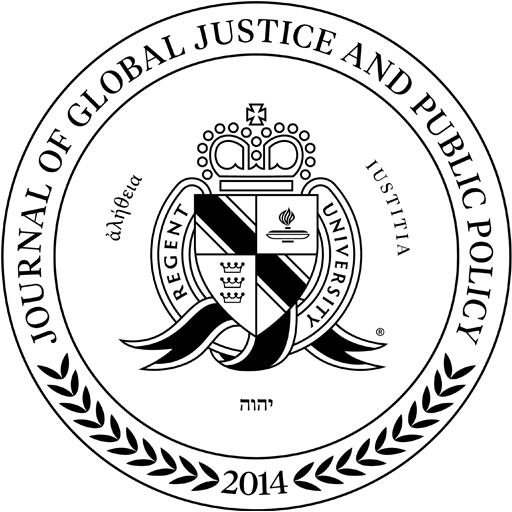Kaitlin M. Ball* | 1 Regent J. Glob. Just. & Pub. Pol. 163 (2015)
INTRODUCTION
“The history of childhood is a nightmare from which we have only recently begun to awaken.”
– Lloyd deMause[1]
Despite barriers created by culture, language, gender, and even age, there is one thing everyone holds in common: he or she was once a child. Children always have been, and always will be, important. Nonetheless, there remains no global consensus as to the legal role of the child. In the past few decades, however, this debate has gained considerable momentum and the rights of the child in international law have begun to crystalize.
In its 2013 Grand Chamber decision in X v. Latvia,[2] the European Court of Human Rights added Europe’s voice to the fray, and opined as to the role and rights of the child in European legal culture. In this decision, the European Court of Human Rights has done more than simply consider the best interests of the child; it has given that child a voice. This article will explore that judgment and explain how the European Court of Human Rights has employed the legal doctrines available to it in such a way that not only maintains the integrity of the legal instruments before it, but also furthers the child-centered jurisprudential dialogue.
First, this article will introduce the facts, procedural background, and legal analyses pertinent to the European Court of Human Right’s X v. Latvia judgment. Second, by way of background, this article will then explore the relevant legal theories, history, and instruments at play in the judgment and the historical development of the best interests of the child standard and child-centered jurisprudence. Third, this article will present an analysis of how the above-mentioned legal theories, history, and instruments helped inform the European Court of Human Rights judgment in such a way that furthered the child-centered jurisprudential dialogue in a sustainable manner easily adopted by domestic courts.
a. The Facts of X v. Latvia
The applicant (X.) is a Latvian national born in 1974, and, as of 2007, an Australian citizen.[3] X. met T. at the beginning of 2004, and moved into his apartment at the end of that year during the final stages of pregnancy.[4]
In early February 2005, X. gave birth to a daughter, but listed no father on the birth certificate.[5] As a result, X. was able to claim single-parent benefits from the Australian government while she continued to cohabitate with T.[6] X.’s relationship with T. began to “deteriorate,” although she continued to live with T. as a tenant.[7]
In July 2008, X. left for Latvia with her then three-year old daughter.[8] One month later, in August 2008, T. sought to establish his parental rights with respect to the child in Australian Family Court by means of a sworn affidavit that stated:
[H]e had been in a relationship with the applicant [X.] since 2004 and the [applicant] had always indicated that he was the father of the child; the rental agreement . . . was a sham and had been a mutual decision; he had made false statements to the [Australian] social-security services in order to enable the applicant to receive single-parent benefit. T. asserted that the applicant [X.] had left Australia with the child without his consent.[9]
T. further claimed that X. had fled to an unknown location in Latvia, and submitted correspondence with members of his family in support of this claim.[10] While X. had been invited to attend the hearing through various electronic means, she was not present.[11] On November 6, 2008, the Australian Family Court recognized T.’s paternity in respects of the child, and further held that T. had exercised joint responsibility for the child since the child’s birth.[12]
T. therefore sought to pursue matters under the Hague Convention on the Civil Aspects of International Child Abduction (Hague Abduction Convention), an international instrument that entered into force in 1980 in order to help address the rising problem of international parental child abduction.[13] The Australian judge refused to rule on whether the child’s removal had been wrongful pursuant to the Hague Abduction Convention and expressly left that determination for Latvian courts; X. nonetheless did not appeal the judgment.[14]
b. Procedural Developments Leading to the 2013 Decision by a Grand Chamber of the European Human Rights Court
On September 22, 2008, the Latvian Central Authority received a request from T. asking that the child be returned to Australia under the Hague Abduction Convention.[15] The Australian Central Authority furnished a sworn affidavit detailing the pertinent Australian law and guaranteed that T. had exercised joint custody over the child with X. on the date the child had been removed from Australia.[16] On November 19, 2008, the Riga City Zemgale District Court considered the Hague Abduction Convention request in the presence of both X. and T.[17]
At this hearing, X. denied that T. had any paternal rights, as she had been married to another man at the time of the child’s birth, and T. had made no efforts to have his paternity recognized before the child’s departure from Australia.[18] X. further alleged that T. had acted aggressively towards her, and accused T. of initiating proceedings under the Hague Abduction Convention “only in order to benefit from them in criminal proceedings that had allegedly been brought against him in Australia.”[19]
The representative appointed by the local Latvian guardianship institution urged the District Court to dismiss T.’s request, arguing that X. had been a single mother at the time of the child’s removal from Australia, and “that the child had developed ties with Latvia.”[20] X. further lodged a complaint under Article 13 of the Hague Abduction Convention.[21]
The Latvian District Court instead granted T.’s request, ruling that the child’s removal had been wrongful and ordering that the child be returned to Australia immediately (not later than six weeks after its decision).[22] The court held that, pursuant to an uncontested judgment by an Australian family court, T. and X. exercised joint parental responsibility.[23] The court surmised that the Latvian courts did not have the authority to reverse that decision, or interpret the relevant Australian law.[24] The District Court equally dismissed the allegation of potential psychological harm as unfounded.[25]
X. appealed the Latvian District Court’s judgment, alleging that she had been the child’s sole guardian both in law and in fact upon their departure from Australia.[26] X. further claimed that the child’s return to Australia would “expose the child to psychological harm.”[27] X. submitted a psychologist’s certificate, which had been prepared after the District Court’s judgment, supporting this assertion.[28] Moreover, X. submitted additional evidence seeking to establish the child’s ties with Latvia, including that the child spoke Latvian as a native language.[29] Further, X. alleged that T. had mistreated both her and her child, and accused the District Court of wrongfully refusing to request information from the Australian Central Authority regarding T.’s criminal record.[30]
- THE HISTORY OF CHILDHOOD 1 (1974). ↩︎
- X v. Latvia (No. 27853/09), Eur. Ct. H.R., Grand Chamber (2013). ↩︎
- Id. ¶ 9. ↩︎
- Id. ¶ 10. ↩︎
- Id. ¶ 11. ↩︎
- Id. ↩︎
- Id. ↩︎
- Id. ¶ 12. ↩︎
- Id. ¶ 13. ↩︎
- Id. ↩︎
- Id. ¶ 14. ↩︎
- Id. ¶ 15. ↩︎
- Convention on the Civil Aspects of International Child Abduction, Oct. 25, 1980, T. I. A. S. No. 11670. [hereinafter Hague Abduction Convention]. ↩︎
- X v. Latvia, Grand Chamber, ¶¶ 15–16. ↩︎
- Id. ¶ 17. ↩︎
- Id. ↩︎
- Id. ¶ 18. ↩︎
- Id. ¶ 19. ↩︎
- Id. ↩︎
- Id. ¶ 20. ↩︎
- See id. ¶ 21. ↩︎
- Id. ↩︎
- Id. ↩︎
- Id. ↩︎
- Id. ↩︎
- Id. ¶ 22. ↩︎
- Id. ↩︎
- Id. ↩︎
- Id. ¶ 23. ↩︎
- Id. ↩︎
* Kaitlin M. Ball is a PhD Candidate at the Department of Politics and International Studies, University of Cambridge. She would like to thank Professor Diane Marie Amann for her thoughts and guidance on this piece. Any errors are solely attributable to the author.

